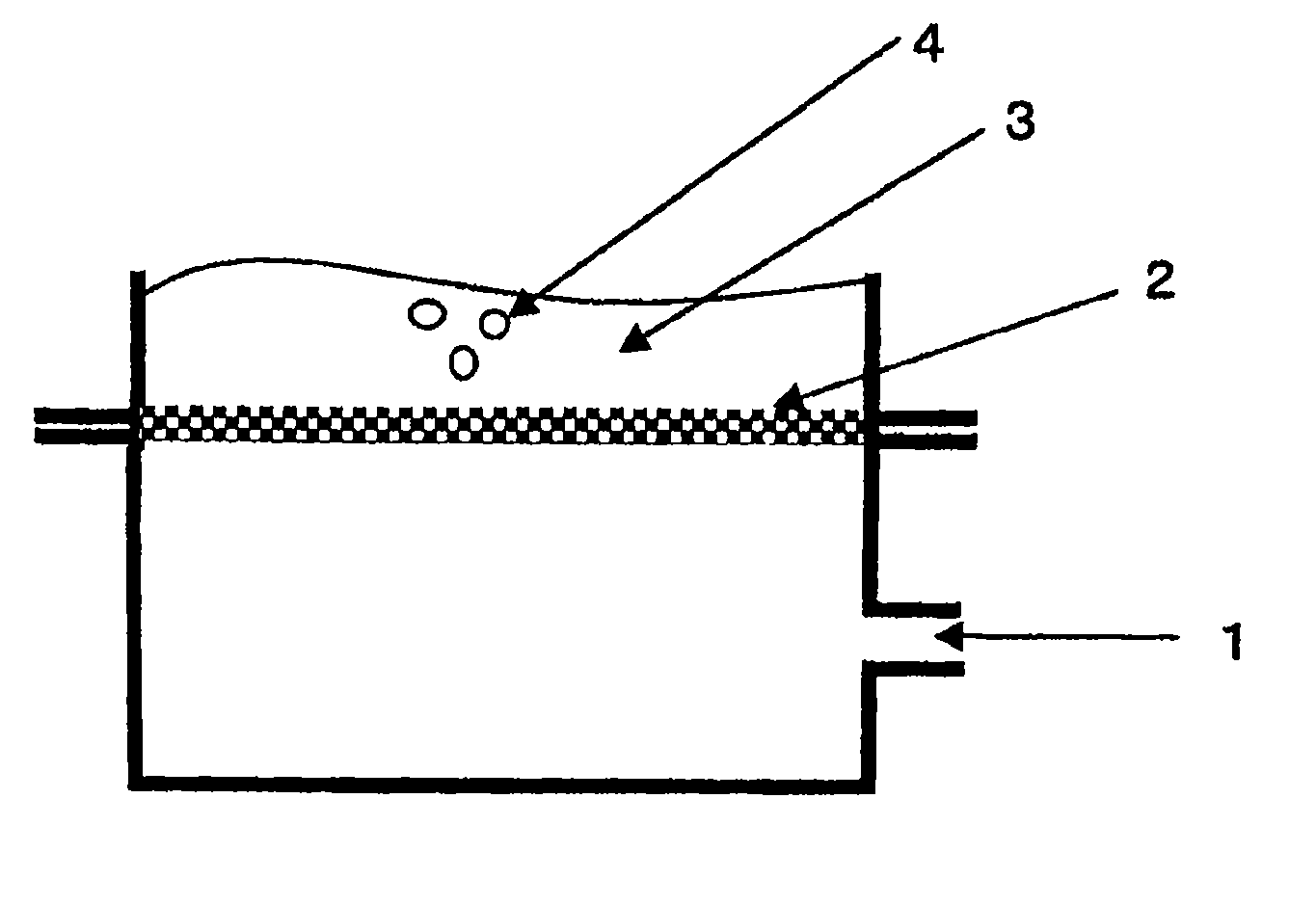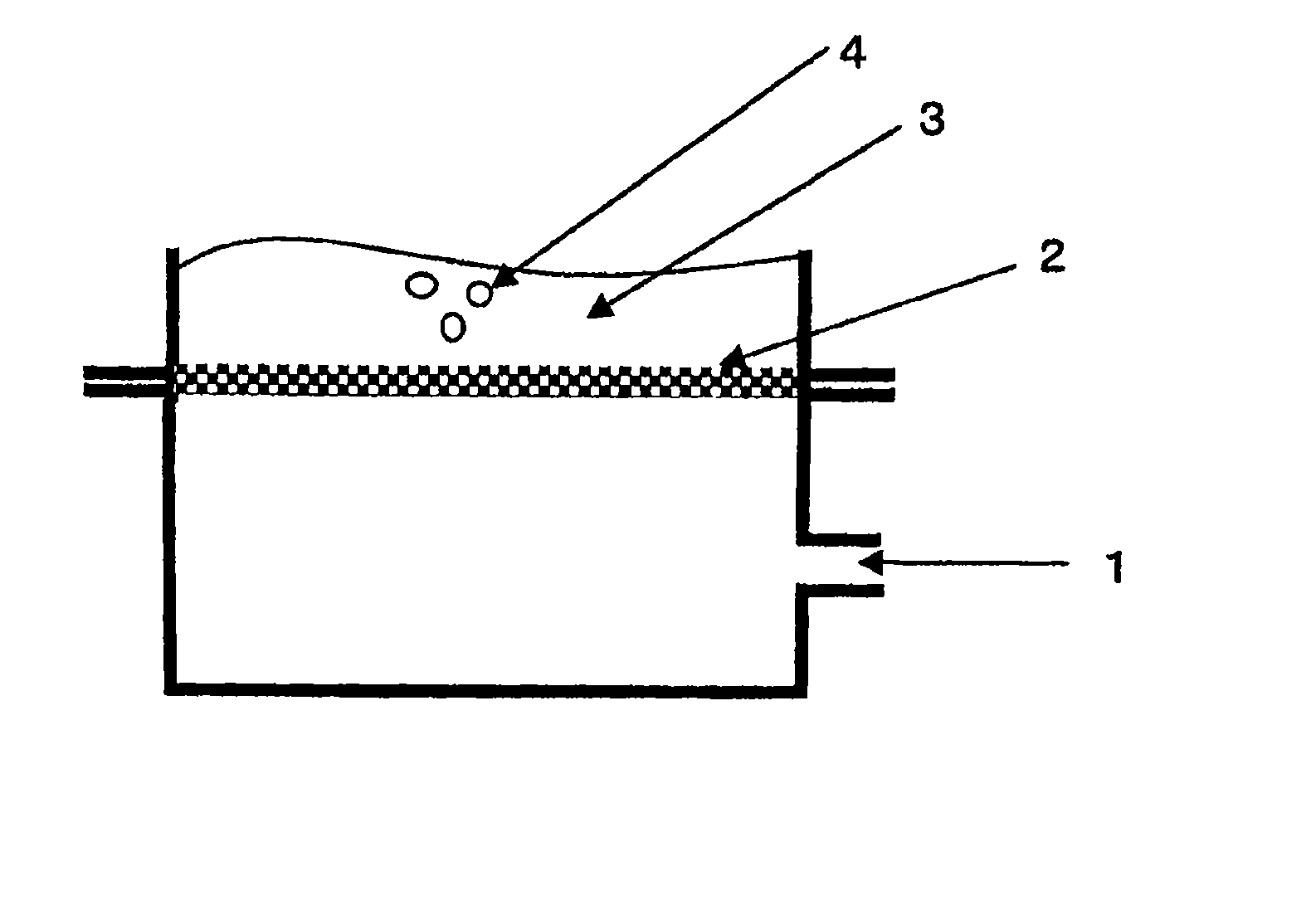Process for producing microfiber assembly
a technology of microfibers and assembly, applied in the field of process for producing microfiber assembly, can solve the problems of nano-scale microfiber formation, limited technical challenge of increasing the number of nozzles per unit area, and large disadvantages of electrospinning in industrial-scale productivity, and achieves the effect of easy maintenance and higher productivity
- Summary
- Abstract
- Description
- Claims
- Application Information
AI Technical Summary
Benefits of technology
Problems solved by technology
Method used
Image
Examples
example 1
[0035]Polyvinyl alcohol having a degree of saponification of 87.0 to 89.0 mol % was dissolved in water to prepare a polymer solution (aqueous spinning solution) having a solid concentration of 20 mass %. As shown in FIG. 1, this polymer solution 3 was put in an 80-mm diameter stainless steel cylindrical container, and an unwoven fabric 2 (unwoven fabric from Hirose Seishi Kabushiki Kaisha; brand name, 15TH145) was placed as a porous material for bubble formation so that compressed air 1 could be supplied from the bottom surface. Compressed air having a pressure of 4.0 kPa was supplied through the unwoven fabric 2 to continuously form bubbles 4 on the whole surface of the polymer solution. As the counter electrode, an aluminum foil was placed 8 cm away from the bubble surface (not shown). Once bubbles have been formed uniformly on the polymer solution, a high DC voltage of 40 kV was applied to the polymer solution side to form a microfiber agglomerate on the aluminum foil. Electrospi...
examples 2 to 8
[0036]Under the conditions shown in Table 1, the concentration of polyvinyl alcohol having a degree of saponification of 87.0 to 89.0 mol % was prepared, and the porous material for bubble formation and the compressed air pressure were varied. Spinning was performed as in Example 1, and the spun fibers of the microfiber agglomerates were weighed. Results are shown in Table 1. It was found that as the compressed air pressure increased, the weight of the spun fibers increased.
examples 9 to 10
[0037]Poly-ε-caprolactone having a weight-average molecular weight of 80,000 was dissolved in acetone to prepare a polymer solution having a solid concentration of 5 mass %. The porous material for bubble formation and the compressed air pressure were varied as shown in Table 1, and then spinning was performed as in Example 1, and the spun fibers of the microfiber agglomerates were weighed. Results are shown in Table 1. It was found that as the compressed air pressure increased, the weight of the spun fibers increased.
PUM
| Property | Measurement | Unit |
|---|---|---|
| diameter | aaaaa | aaaaa |
| diameter | aaaaa | aaaaa |
| voltage | aaaaa | aaaaa |
Abstract
Description
Claims
Application Information
 Login to View More
Login to View More - R&D
- Intellectual Property
- Life Sciences
- Materials
- Tech Scout
- Unparalleled Data Quality
- Higher Quality Content
- 60% Fewer Hallucinations
Browse by: Latest US Patents, China's latest patents, Technical Efficacy Thesaurus, Application Domain, Technology Topic, Popular Technical Reports.
© 2025 PatSnap. All rights reserved.Legal|Privacy policy|Modern Slavery Act Transparency Statement|Sitemap|About US| Contact US: help@patsnap.com


